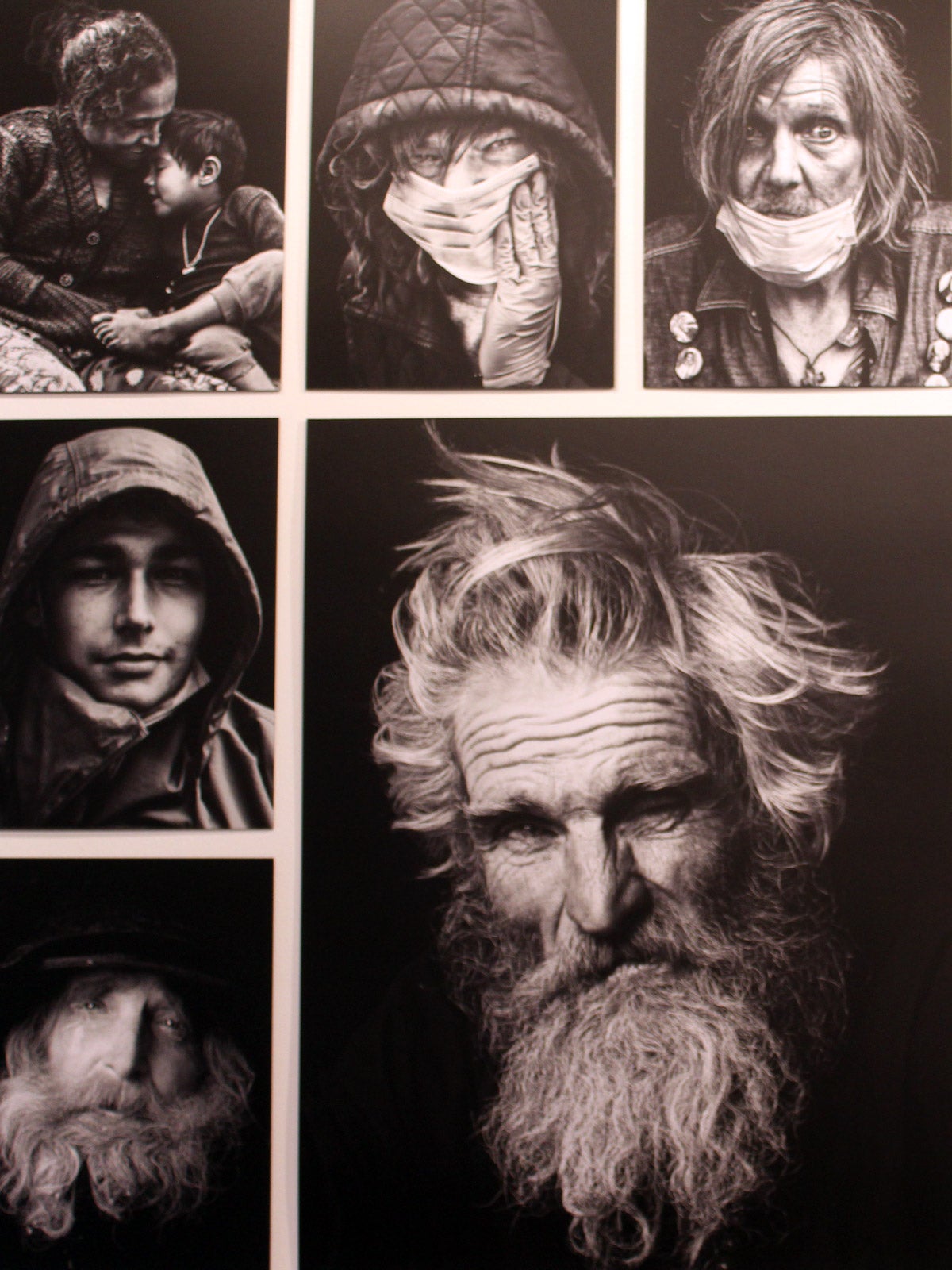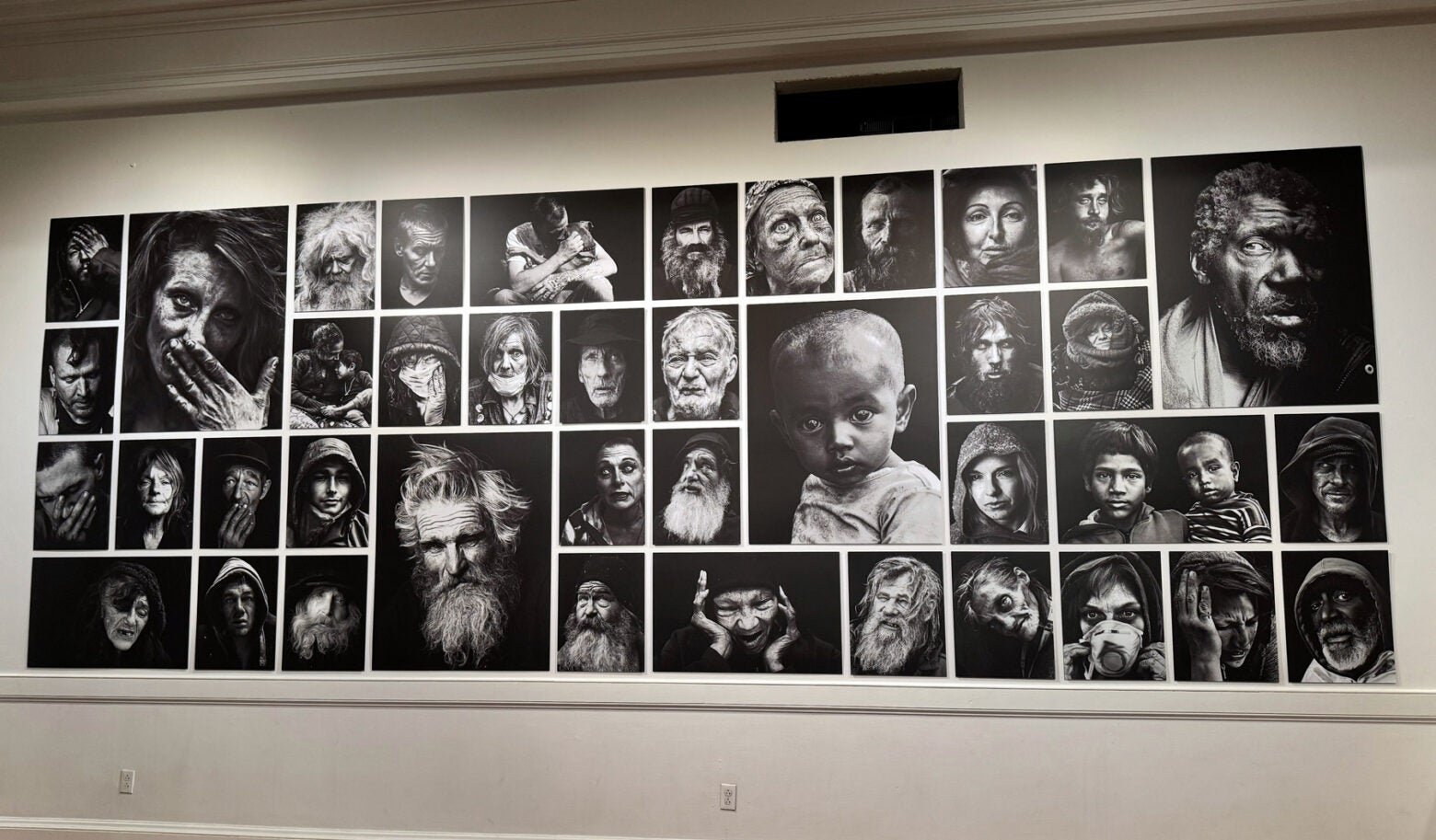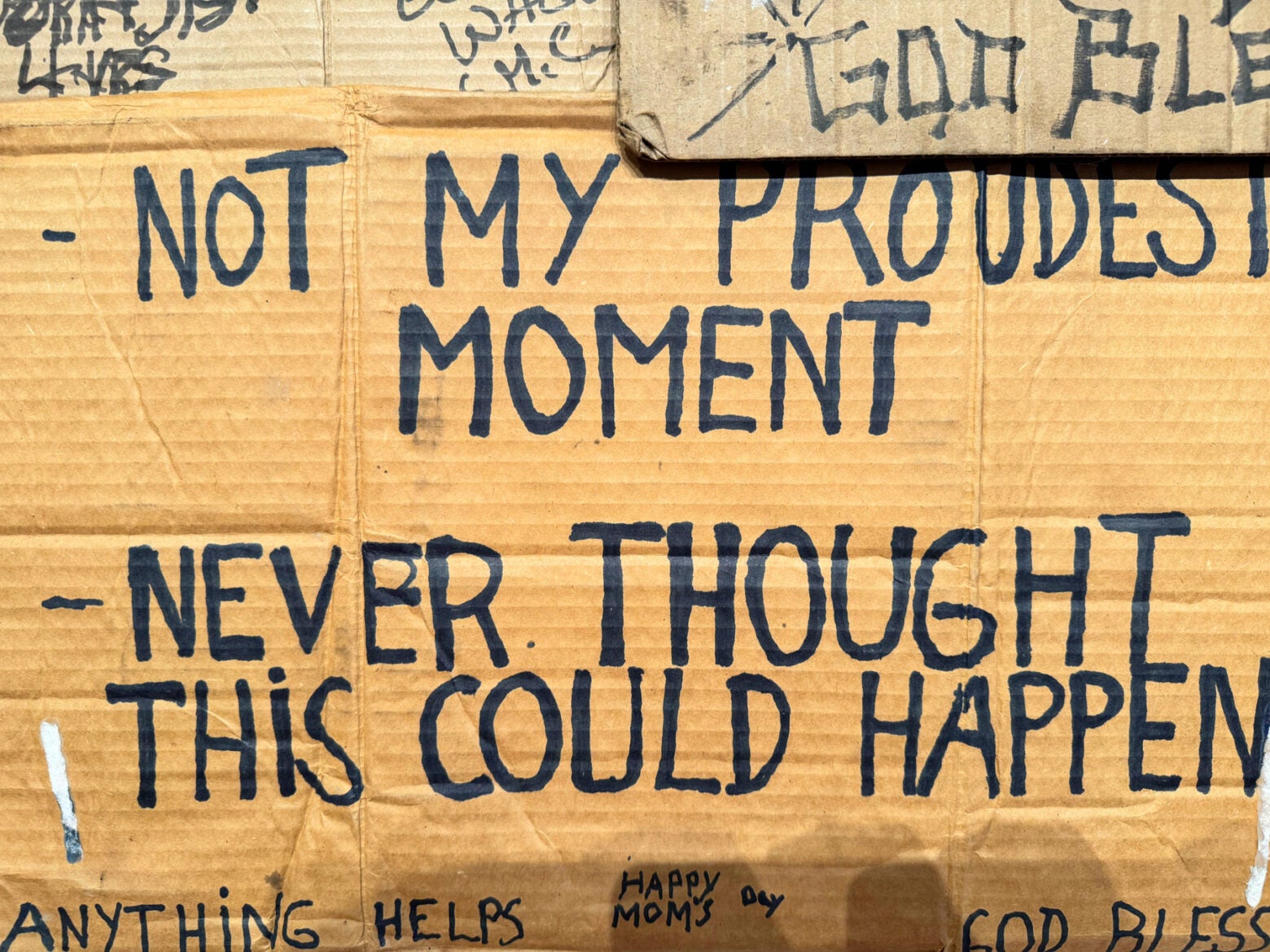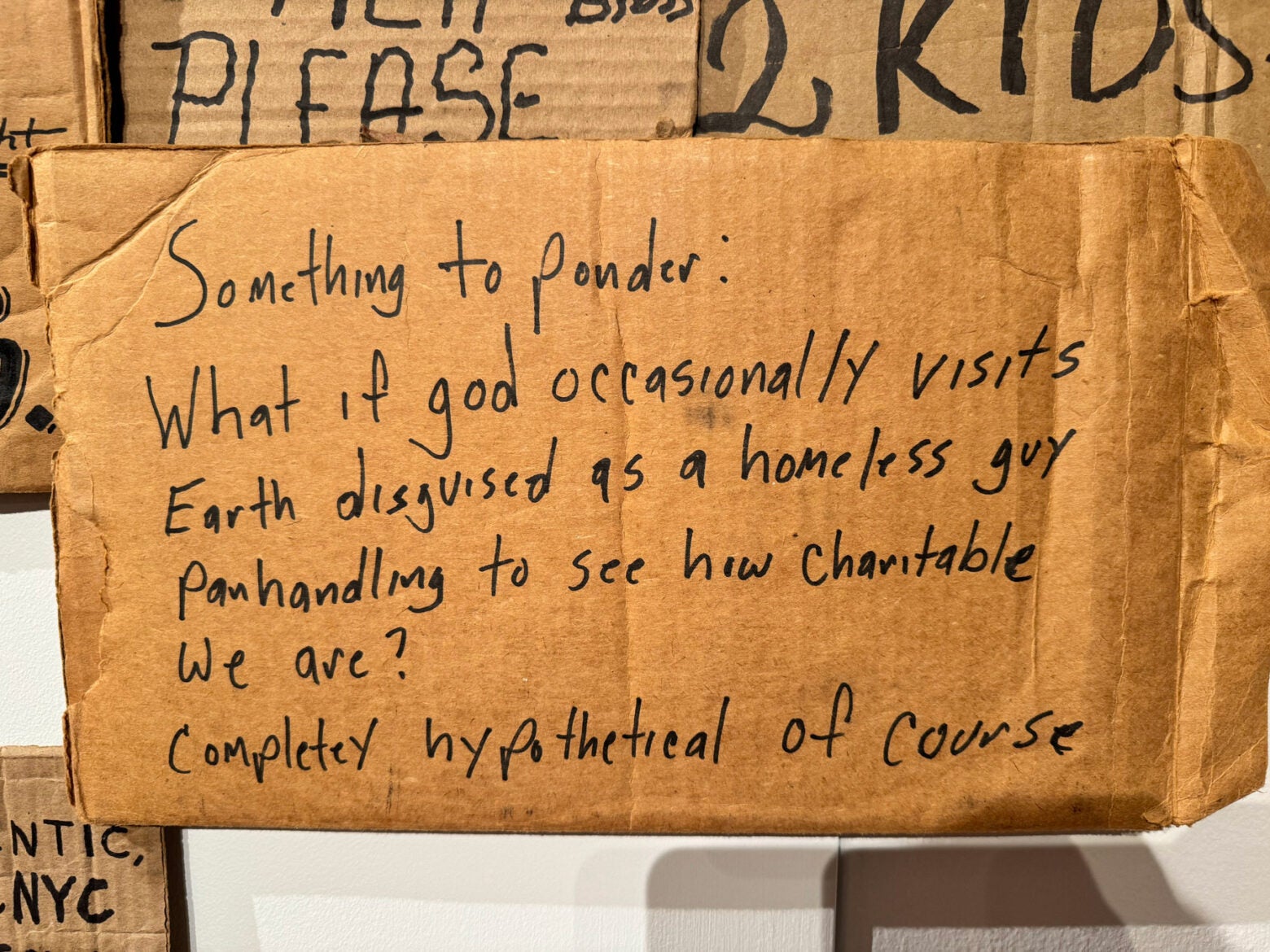Unhoused shows us the public health crisis under our noses
We can’t solve the problem of homelessness if we look away
Harvard Public Health Magazine Search Open menu

OPINION
Unhoused shows us the public health crisis under our noses
We can’t solve the problem of homelessness if we look away.
Harvard Public Health Magazine
Unhoused shows us the public health crisis under our nosesSHARE
WRITTEN BY
Julia M. Klein
PUBLISHED
June 26, 2024
An exhibition on the living might seem an odd fit for a museum best known for its collections of skulls, body parts, and medical oddities. But with Unhoused: Personal Stories and Public Health, the Mütter Museum, run by the College of Physicians of Philadelphia, is both gesturing to the college’s late-18th-century origins in fighting epidemics and signaling a possible new direction.
Elsewhere in the museum, a saponified corpse known as “the soap lady,” preserved fetuses, and slides of Albert Einstein’s brain vie for attention. Another exhibition highlights the issues of consent, provenance, representation, and medical racism that have shadowed the Mütter’s past.
In Unhoused, however, the museum’s motto, “Disturbingly Informative,” assumes a different meaning. What may be most disturbing is our failure to pay attention to the public health problem on our doorsteps.
Sign up for Harvard Public Health
Exploring what works, what doesn’t, and why.
Delivered to your inbox weekly.
- Email addressBy clicking “Subscribe,” you agree to receive email communications from Harvard Public Health.
- EmailThis field is for validation purposes and should be left unchanged.
Confined to a single gallery, Unhoused doesn’t purport to offer a definitive account of the complex links between homelessness and public health. Instead, it provides a space to contemplate individual perspectives.
The focal point of the exhibition is two displays of art—both, in effect, collages. Leah den Bok, a Toronto-based photographer, supplies 40 large, exquisitely detailed black-and-white portraits from an ongoing project she titles Humanizing the Homeless.

Set against black backgrounds, den Bok’s subjects, ranging from a two-year-old to a man in his 80s, are grimy, occasionally wild-eyed, often visibly sad. They can seem lost, or confrontational. Some face the viewer directly; others look away. A catalog offers quotations and bare-bones background information from interviews conducted by the photographer and her father, Tim den Bok. (It would be better if key quotes also were highlighted via wall labels.) The men and women, from Canada, the United States, India, and elsewhere, talk of family cutoffs, drug addiction, mental illness, and the challenges of life on the streets.
Across from the photographs is an assemblage of cardboard signs, purchased by the artist Willie Baronet during cross-country travels for a project he calls We Are All Homeless. Often wrenching and sometimes wryly comic, they entreat passersby for help. “Begging sucks! Compassion doesn’t,” says one. Another cries out, “Shipwrecked.” Together, they send a clear and powerful message: Stop and look. Take notice.
Four benches arrayed in the center of the gallery encourage reflection, and three bulletin boards allow visitors to post comments on their own attitudes and experiences with homelessness and to respond to those of others. One comment, from a recovering heroin addict from the streets of Philadelphia’s drug-plagued Kensington neighborhood, assures visitors, “There’s hope.”
Unhoused provokes empathy, as it is meant to do. The unhoused are not alien to us; homelessness is a profoundly human affliction, it suggests. But in making its case, the exhibition at times says either too much or too little, belaboring some points and shying away from others.
The introductory label includes a trigger warning about “images that some visitors may find upsetting.” But isn’t part of the point to jar people out of complacency and avoidance? The text also offers some unnecessary moral bludgeoning. “The artists, organizations[,] and public health experts working together on this project regard the topics and people represented in this space with respect and ask that you do the same,” it states. It seems unlikely that the openly disrespectful would tarry here—and heavy-handed to dictate visitors’ responses.



Missing is the discussion of the roots of homelessness, a complicated problem with no single cause and no one-size-fits-all solution. Here the exhibition, in its reluctance to dilute its call to compassion, seems to pull its punches.
Its text rightly notes that “[l]ack of affordable housing, coupled with low-paying jobs, contributes to homelessness.” It adds, “People experiencing homelessness are further impacted by more limited access to doctors, mental health care, and other resources. In addition, unhoused people are at greater risk for mental illness and substance use disorders.”
What this wording fails to grapple with is the extent, however difficult to quantify, that mental illness and substance abuse contribute to the plight of the long-term unhoused. One text label does reveal that an astonishing 76 percent of people entering a federal program, the Collaborative Initiative to Help End Chronic Homelessness, had a mental illness. “It’s a little bit of a chicken-and-egg problem,” says René Najera, director of public health at the College of Physicians, who helped curate the exhibition. Given the sketchiness of the evidence, he says, the museum “didn’t want to stigmatize any further. Ultimately, the message was that people who are unhoused are people. We need to think of them as our neighbors.”
